#ba'al hammon
Text
Last time, when I posted the vague translation of an article about Tanit, a lot of people were surprised and said they were unaware of the goddess' very existence... So for those who are interested into the Punic mythology, I will list here some points one can find literaly by going to the French Wikipedia article about the Punic religion. (I precise French Wikipedia because the French and English Wikipedias sometimes do not have the same information)
(Again this is not exact or definitive stuff, just a little bit of intro ; a "little taste for the beginning of the research")
The Punic religion/mythology is the one of the city of Carthage. You know? The Great Carthage, the famed rival and enemy of Rome, Hannibal and all that. It also extended to all the cities and regions which were under Carthage's influence and control. (So we are talking the coasts of Northern Africa, the south of Spain and Italy, and other adjacent areas)
The Punic mythology is derived from the Phoenician mythology, hence why several Phoenician gods can be found back among the Punic pantheon - but differences between the Phoenician and Punic religions are attested as early as Carthage's foundation.
Despite the conquest and destruction of Carthage by the Roman Empire, the religion still went on - it is attested as having been performed during the 3rd and 2nd centuries BCE, and some theorize the Punic gods might have stayed "alive" as late as the fourth century CE.
One of the big problems when studying the Punic religion is to differentiate historical facts from biased accusations, because the Roman authors were known to heavily caricature and demonize its rites. Notably the Romans regularly accused the people of Carthage of monstrous infant-sacrifices, and the archeological discoveries are quite ambiguous as to whether there were indeed sacrifices of children or not...
As I said before, the Punic gods were born when the Phoenician gods were brought over to Northern Africa and acquired there specific traits, while also interacting with other local religions. The Punic gods are dominated by the figure of the "superior god" that is Ba'al Hammon (or just Ba'al), and which is inherited from the Phoenicians - though the Punic Ba'al and the Phoenician Ba'al are quite different from each other. Astarte, Ba'al paredra (female companion) in the Oriental religions, is also present in the Punic religion but in a secondary and "weakened" way - she was rather replaced/fused with an emblematic goddess of the Punic religion, Tanit, the paredra of the Punic Baal (and even called the "face of Baal").
Astarte was preserved as a goddess of fecundity and war, though she seems to have been moved to a "secondary" situation. Other Phoenician gods preserved include Eshmun, god of medecine, and Melkart, a god symbolizing expansion and enrichment. Melkart was quite notably fused/equated with the Greek figure of the hero-god Herakles.
Most of the gods of the Punic pantheon (except for Baal, which oversaw and dominated them all) acted as "poliads", aka as city-gods. Tanit is considered to have been the goddess of the city of Carthage, while Melkart was the patron of the city of Gades (Cadiz), and Sid the tutelar deity of Sardinia (hence his alternate name "Sardus Pater").
Ba'al Hammon, the leader of the Punic gods, was born of the meeting between the Phoenician Baal, and the Egyptian Ammon, whose cult had spread to Lybia and almost most of Northern Africa (Ba'al Hammon notably had the same ram-association as Amon). This dual god, who symbolized fire and the sun, was later, in the Roman era, assimilated with Jupiter - and it is attested that the Punic Baal (Baal-Amon-Jupiter) still had a worship when Christianity started establishing itself.
The Punic religion had some "imported" cults too. Most notably, during the Greco-Punic wars, the Punic civilization adopted the worship of Demeter and Kore, as goddesses of fertility and harvest. This was due (according to Diodorus of Sicily) to the destruction of these goddesses' temple at Syracuse in 396 BCE: after this, all sorts of disasters plagued the army of Carthage, and so the city adopted the worship of the goddesses in an attempt at appeasing them. Some archeological clue also indicate that the cult of Isis might have existed at Carthage - but it is not firmly confirmed.
The Punic gods were usually invoked when an important historical event had to take place: for example before any military campaign, they were invoked, and if a sea-expedition was successful, the gods were thanked. The Punic religion was a state-business, since there was not cleric/secular division in the Carthagian lifestyle. The priests did not have any direct or open political power, but they had an enormous influence over society - and the members of the higher ranks of the religious hierarchy all belonged to the most powerful families of Carthage.
There was an entire "society-within-a-society" linked to the temples, since each temple had its own set of barbers, slaves and servants. Sacred prostitution was also common within many Punic temples: this prostitution involved both male and female prostitutes, and to be one could be either a definitive, lifetime state, or a temporary function. There was also a whole commerce of ex-votos the followers of the god could buy in buildings linked to the temples - in fact this commerce was most developped by the sea-shores and in coastal cities, where foreigners could bring donations and offerings or receive ex-votos. In fact, the offerings of the temples (usually meat and other resources for consumption) played a big part in the economical model of Carthage. There were specific "prices" and "tariffs" when it came to offerings: we have preserved several "price lists" indicating which type and amount of offering was needed depending on the request or demand. Could be sacrificed vegetables, food, objects, but also small and big animals (usually birds for "small" and cows for "big"). The offering was shared between the priest, the offerer and the god, and then a commemorative stone was set.
A big debate point is the tophet of Carthage, the sacred area dedicated to Tanit and Baal. The thing is we have very little clues and knowledge about this area, outside of vague and repetitive texts found on the ex-votos, thanking "Tanit Pene Baal and Lord Ba'al Hammon". The problem is that some Roman writers and historians (but not all - which adds oil to the fire) said the child-sacrifices took place within this area, identifying these rituals to the sacrifices of Moloch. Some child bones were found in urns, but given no violent cause of death could be found, it is unknown if this indeed was a place of child-sacrifices, or a necropolis for dead children.
It is established that, in the Punic religion, there was a difference between the state-religion, dominated by Carthage, and a folk-religion expressed through the amulets and the talismans protecting against demons and diseases. The folk-religion was heavily influenced by the Egyptian mythology: the Egyptian god Bes was a very popular folk-god of the Punic civilization, charged with protecting both the living and the dead.
We also know a few more details of religious practices, though they stay obscure... For example we know there was a worship of the ancestors within the houses of Carthage, but we don't know how, why, when. Similarly we know the Punic civilization forbade the eating of pork - a diet restriction still efficient by the early 4th century... But why, we don't know. We also do know the Punics seemed to have a belief in life after death, because even though the funeral rites involved incineration, there were mortuary chambers decorated like a house of the living, filled with offerings of food and drinks, and perfumed before being sealed. The position of the corpse was sometimes similar to the "Oriental" rites inherited from the Phoenicians, but other times influenced by the funeral practices of the Berbers (which were one of the population with influential interactions with the Punic civilization).
Numerous elements of modern-day Northern African/Muslim cultures were directly inherited from the Punic religion. For example, the khamsa amulet is widely recognized as being a leftover of the Punic amulets ; similarly, modern-day Tunisia regularly uses the "Symbol of Tanit" (it is used within the cinematographic prize of the "Gold Tanit"). The Algerian and Tunisian expression "Baali agriculture" to designate a non-irrigated agriculture is explained as a reference to the Punic Baal, the same way the Tunisian ritual of the Umuk Tangu/Ommek Tannu (Oumouk Tangou, Ommek Tannou, "Mother Tannou/Tangou"), a rain-invocation for periods of droughts, is a survival of the goddess Tanit (of whom Tangu/Tannu are alternate names). Some go as far as to theorize that the "star and the crescent", symbol of the Muslim religion ever since the Ottoman empire popularized it, might have been influenced by the Punic religious symbols...
#punic religion#punic mythology#punic gods#gods of carthage#carthaginian gods#carthage#baal#ba'al hammon#tanit
11 notes
·
View notes
Text
[during a thunderstorm]
Me: uohoho *lights on Ba'al Hammon's candle* uhoho heello my King :3 i tuought of you and-
[a lightning hits a tree on my street]
Me: FUCJJNCUCKCUCKFUCKCUFUCK
Ba'al: Good evening :) It's nice to be here. I missed you, songbird.
Me: *still shaking* Thamks
5 notes
·
View notes
Text
Vesperian Gods
[Continued from here.]

“So that explains abortion,” Rita admitted, “but not deficit spending.”
Ba’al waved a hand. “After the Romans burned Carthage, there were few Carthaginians left. I starved, nearly to death.”
He leaned forward on his elbows and laced his fingers together in front of his face.
“The only offerings I got were scraps, not even intended for me. The Romans would occasionally leave infants out in the elements, when they couldn’t feed them, but that didn’t have the same nutrition as intended sacrifices.”
Rita clenched a fist under the table as Ba’al talked. At no point did he suggested that he had asked for such offerings, but the fact that he profited from it was still intensely disturbing. Rita fought the urge to burn him where he sat.
Not that it would do any good. Ba’al lived on the energy of his worshipers, so he’d re-incorporealize eventually.
“And the writing was on the wall. Mene, mene, tekel, upharsin,” he quoted darkly. “Civilized peoples weren’t going to return to sacrificing their children, and the primitives in the Americas weren’t going to share.”
He smiled at a thought. “Cortez did the world a favor getting rid of them.”
Ba’al leaned back, and brushed the tops of his pants.
1 note
·
View note
Quote
here come Heavenly Archangel [HA = HARRELL] SATAN [Santa] CHRIST [Claus] from Inner Earth's [HADES] Most Darkest [Occulted] Interstellar Kingdom Halls of 144,000 9 Ether JEHOVAH OCCULT BIBLE [JOB] WITNESSES Experiencing [WE] A New [ANU] Life in Biblical Eve's Pristine Bayou Gardens of Idyllic ATLANTEAN ESTATES from MILLIONS of AZTECAN Years Ago [MAYA] Underneath [MU] Hell, Louisiana [LA] in 2021 [V]
Spirit Lord Ba’al Hammon
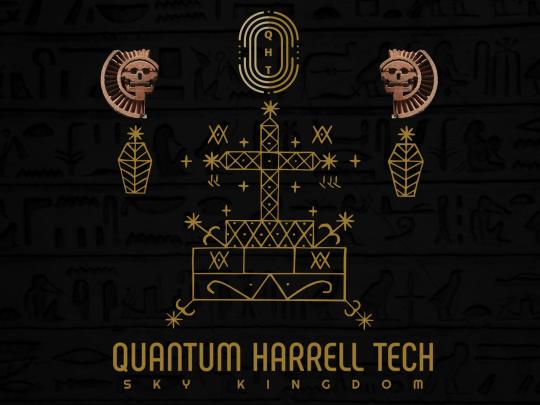
#quantumharrelltech#ROYAL URAEUS STEELES#9 ETHER STEELES OF BA'AL HAMMON#9 ETHER LIFE [EL] AFTER DEATH#NEW ATLANTIS
1 note
·
View note
Text

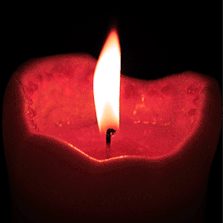
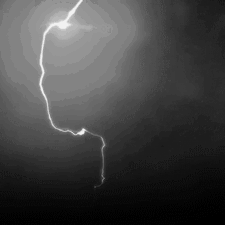


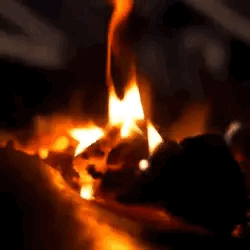

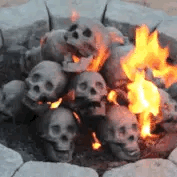

Ba'al Hadid Ba'al Hammon Valentine - The Wicked + The Divine
⚡ 🕯️ ⚡ / 🔥 ☀️ 🔥 / 🌩️ 🔆 🌩️
#wicdiv#the wicked + the divine#wicdiv stim#ba'al wicdiv#valentine wicdiv#fire stim#death cw#lighting#sky#🟦logan 2🟦#🫖grey🫖#wicdiv spoilers
24 notes
·
View notes
Text
This isn’t really an essay. It’s more like a rambling string of thoughts about Valentine Campbell.
Or, if you like, Baal.
(Spoilers under the cut.)
Baal has arguably had the wildest character arc in the series. We see a lot of him, both literally (as a performer and later a spokes-god for the Pantheon after the events of Rising Action) and figuratively (the emotional revelations that come with Inanna's death). We see much of Baal, and many sides of Baal's personality, from the brash and arrogant storm god to the simply vulnerable emotional man he is later on.
And yet, there is so much to unpack with him as the series goes on.
He starts off, in his first appearance way back in Issue 2, in a TV interview, offering his two cents on Lucifer's attempted murder. His belief that she went to jail for people trying to shoot her is pretty fair, though the newscaster seems to think he glorifies violence. His first display of arrogance is walking off of the interview, saying he think he's "better than you [the interviewer]".
Add in his grand mural in Valhalla, and on the surface, Baal seems very much like his archetype. But that's the entire point, isn't it?
Anyways.
Flash-forward to the start of Commercial Suicide. yes, we see Baal at his most violent, thrashing Morrigan to a pulp for supposedly hiding Baphomet, believed to be Inanna's murderer. But we also see his true self emerge here; the ever-so mused-over fire/lightning tears at the idea that if not for the goths, Inanna might still be alive (a false belief, but we all have a moment of sympathy for the lightning god).
The next time we see Baal, he's his usual cool self, but we see his sibling-like dynamic with Minerva. She wants to see Morrigan; he wants Mini to keep a safe distance from "Eyeliner Made Of Eyes". Understandable, especially given the capabilities we see of her war-goddess side, Badb, later on in the series. Another breath of relief; maybe Baal isn't so bad after all if he can be Minerva's big brother figure.
His emotions are on full display in Rising Action, especially in Issue 21 during the god battle. By the time the fight is over, he starts to show trust to Persephone and Co. because maybe, just fucking maybe, if Laura is alive and a goddess, then maybe Ananke is lying. Maybe.
Of course she is, we all find out, as she's carving Minerva up on a murder machine. And Baal throws himself full-throttle at Ananke to stop her and save the "li'l flower" of the Pantheon. All for nothing, of course, but the attempt and the desire to keep Minerva safe is what sells us: Baal, for all his performative masculinity and displayed arrogance, isn't so bad. He's a jerk with a heart of gold, not entirely like Baphomet/Nergal.
Imperial Phase shows more of this side of Baal. Yes, he's doing what he's doing and we get the first few glimpses at it, albeit with no real context. Yes, he's still acting the arrogant fucklord in the public eye, but we have a sense of why now: with Ananke dead, someone has to be the leader, so why not the first god to come back? He's already Minerva's legal guardian, he knows enough of Ananke's plans to be in control, he's a natural spokesman, he has the strength to put down anyone who steps out of line... all necessary traits to be the de facto leader.
Naturally, he's not much use as a leader when Sakhmet hands him his ass on a silver platter in Persephone's underground hideaway. But the fear in his eyes as Minerva tells him that Persephone found a secret room in Valhalla (with no other context, of course) tells us everything: Baal is hiding something.
And what he's hiding just about disintegrates any hope or love we as a fandom had for Baal. I'm fairly sure I don't have to get into that. A quick search of Ba'al Hammon will tell you everything.
And yet, despite it all, there's still emotional vulnerability throughout the whole affair of Mothering Invention and the first half of "Okay". He sheds tears at the idea of killing twenty thousand people to save the other eight billion or so. He immediately tosses the idea of killing any more children, possibly because of Persephone's confession or because he's simply sick of doing what he's done ritually every four months for the last two years. It almost makes his scenes in the Christmas Annual mocking; seeing him so loving towards Inanna and yet doing all of that makes us wonder what else he's capable of lying about.
And yet, when everything goes to hell, he is determined to get even with Laura for fucking up his ritual to off the Great Darkness. That is, until he finds out the truth of the Great Darkness.
And in that moment, the exact moment of realizing he's been played for a pawn in Ananke's game, that everything he's done was just to get him to play his part and ultimately keep the myth of the Great Darkness fueled...

... his face says it all. This is a man who’s not been played and played hard, but it’s a man who’s just had the gravity all of his past actions hit him at once. His words immediately after drive it home.
"You're a machine that kills people? Kill me."
To make this even harsher on himself (and us, as fans), his confession at the height of Valhalla after Minerva's revelation that godhood is, essentially, a cheat code for the power they already had. Finding out that none of his actions were necessary, that his entire identity was a lie, and that he says nothing about what his godhood meant to him while everyone else ranges from their godhood meaning they could be themselves, be better, be special, be a saviour, be alive despite it all...
... Baal says nothing. He doesn't have to.
His actions in the most recent issue only make things more complicated, one last twist of the emotional dagger in our collective side.
"I would love to live with you... but that would mean living with me. I wish I was the person you deserved, but I threw that away.
"I spent my whole life trying to be a big man. And if this is what being a man means?
"It's not worth it."
And just like that, I have no idea how to feel about Baal. His character arc has been fucking wild. Whereas some gods got better as people (Baphomet giving his life for Dionysus), got worse for their godhood (Morrigan's increasingly abusive control of her "King") or simply revealed their inner shittiness (Woden), Baal has been a roller-coaster of emotions.
From arrogant fucklord to emotional big brother to utter monster to suicidal sacrificial lamb, Valentine Campbell is a complex man. Love him, hate him, consider him brilliant, consider him beastly, he is what he is.
38 notes
·
View notes
Text
Ba'al Collective #thirteencovens
New Release!
Ba’al Collective (Fourteen Tales of Thirteen Covens Book 6)
Garrett will do anything to preserve the Sanderson bloodline, including human sacrifice.
Mary Rose, the last of the blood born Sanderson’s, was content to be a docile housewife, allowing her husband, John, to run her father’s legacy – The Ba’al Collective. Until she learns John’s terrible secret. A secret so dangerous it could rip the coven apart.
For Magus Garrett Hammon, it’s time for the Sanderson bloodline to retake its rightful leadership, and exalt the coven to its former glory. But at what cost? Sacrifices must be made.
Are you ready to choose a side?
#thirteencovens
GET IT NOW (Also Available on Kindle Unlimited)
Thirteen Covens Update: You know what this means, right? One more novella – Order of Eurynome – and the first paperback with the first seven stories comes out. We’re calling the first paperback BLOODLINES BOOK ONE. Probably coming September! So those who have been waiting for a paperback, or who want the first seven books for the keeper shelf (you know you do!), it’s coming! Or you can wait for the full BLOODLINES collection (all 14 stories), which is going to be released in paperback, hardcover, and ebook. But that’s not coming until 2019. Hence the reason we decided to release a paperback every 7 stories. Not to mention by the time Order of Eurynome is done, we’re pushing 100,000 words for the first 7 stories.
BTW – I’m not doing a newsletter tonight. I might put one out tomorrow. The big newsletter will be the one announcing Order of Eurynome, because I’ll be doing an exclusive list only drawing for a copy of FOURTEEN TALES OF THIRTEEN COVENS: BLOODLINES Book One.
0 notes
Photo
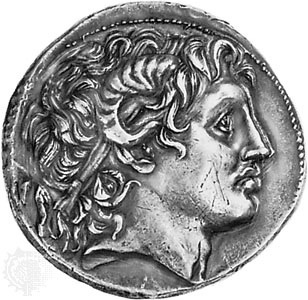
Saturnus, called Ba'al Hammon in Phoenicia, meaning "Lord of Braziers."
31 notes
·
View notes
Text
Vesperian Gods
“Oh, Mister Simon, I loved you on Stargate,” she gushed. “I mean, you were amazing!”
Ba’al smiled. “That’s always wonderful to hear.”
“Oh, oh, oh. Can a get a quick picture to show my friends I met you?”
“Certainly.” Before she could get into selfie pose, Ba’al plucked the phone out of her hands and handed it to Rita. “But we should do this properly.”
Rita handled the phone deftly. They certainly understood design on this plane, which made it easy. Get the picture the way you wanted on the screen, and then tap the virtual button.
Rita took two pictures to make sure she got a good one, and then handed the phone back to the fangirl -- who looked from Rita to Ba’al, and back again, realized she was intruding, and beat a hasty retreat.

“Does that happen to you often?” Rita asked as they returned to their table.
“Quite,” Ba’al replied. He was about to move to get Rita’s chair, but she wasn’t used to polite courtesy, and ignored the effort.
“Even though you’re not ...”
“Cliff Simon,” Ba’al finished helpfully, as he sat. “But I try to be as gracious as I can.
“A god’s appearance is influenced by how his worshipers see him, and Mister Simon’s turn as my namesake has gifted me this handsome form.” His hands framed his torso briefly.
“It’s a great improvement over how the Carthaginians saw me. Goat horns,” he rolled his eyes, “and not just two, but a host on top of my head.” He held his hand over his head, fingertips up, mimicking the effect.
“A fashion disaster,” Rita deadpanned.
“Indeed.”
1 note
·
View note
Photo

Ba'al Hammon colonized Saturn in the Late Medieval period with Tanit http://michaelalberta.blogspot.com/2018/06/baal-hammon-colonized-saturn-in-late.html
0 notes
Photo
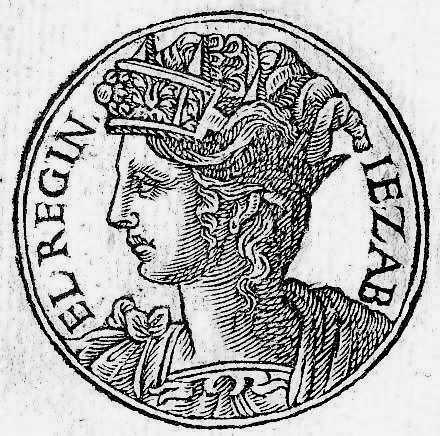
Jezebel from Promptuarii Iconum Insigniorum by Guillaume Rouille, c.1553. Jezebel is the Anglicized transliteration of the Hebrew אִיזָבֶל meaning 'Izevel or 'Izavel. The Oxford Guide to People & Places of the Bible states that the name is "best understood as meaning 'Where is the Prince?'", a ritual cry from worship ceremonies in honor of Ba'al Hammon, identified with the Roman Saturn, during periods of the year when the God was considered to be in the Underworld.
66 notes
·
View notes